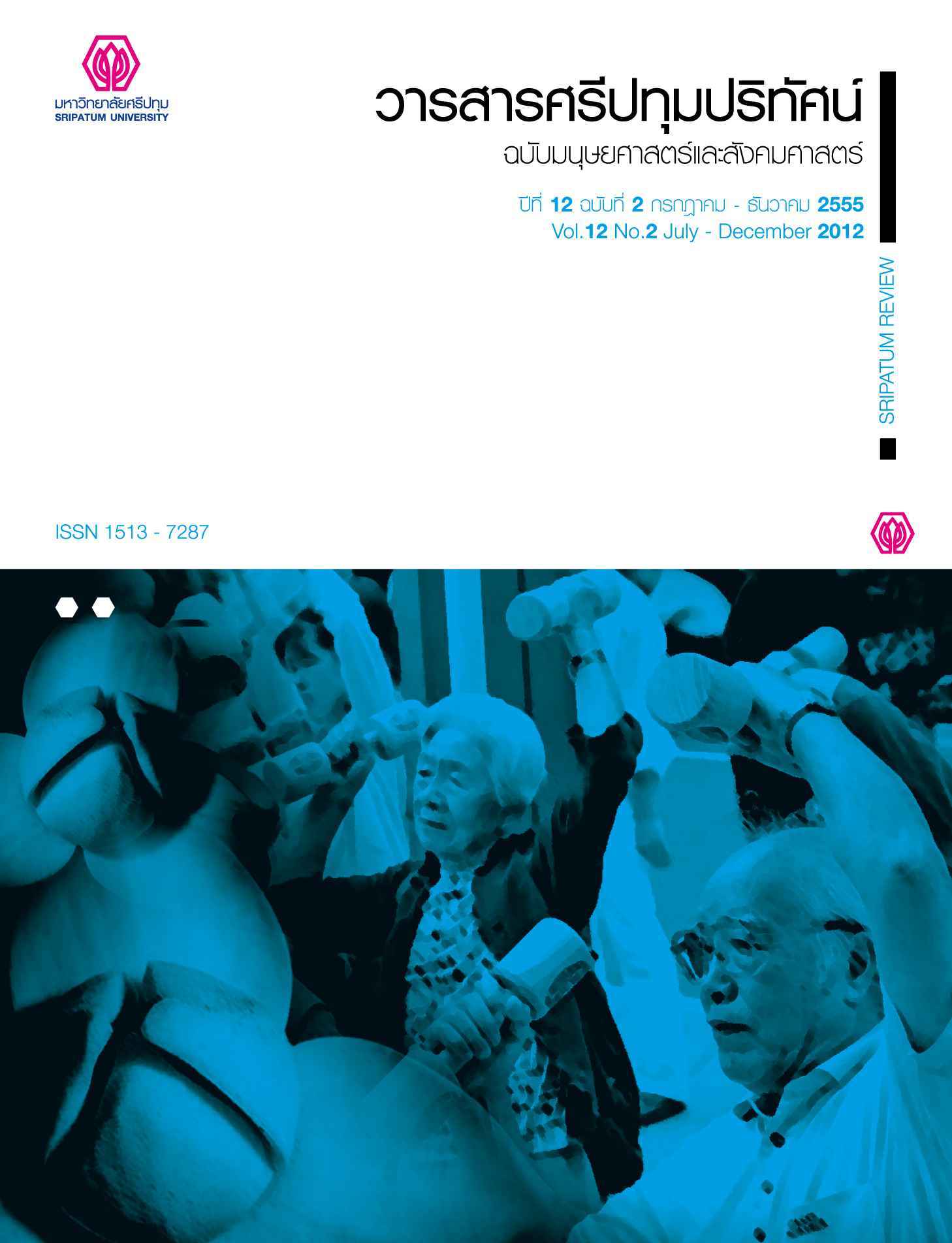USING SYNECTIC TECHNIQUE TO DEVELOP CREATIVE ENGLISH WRITING PROFICIENCY
Main Article Content
Abstract
The purposes of this research were to compare the undergraduate students’ creative English writing proficiency before and after using Synectic Technique and to compare their abilities in using Synectic Technique with the varieties of creative English writing activities . The target group consisted of 35 undergraduates ( Business English ) who enrolled Writing 2 in the second semester of the 2009 academic year at Rajamangala University of Technology Lanna, Chiang Mai. The research instruments were 6 creative English writing ability plans and the creative English writing ability tests implemented before and after using each lesson plan. The finding of the study revealed that the students’ mean scores of the creative English writing ability post-test after using Synectic Technique were 19.30 percent higher than those of the pre-test and the creative English writing activity on the stimulus of tasting showed the highest post-test score at 39.00 percent and followed by the English writing activity on the stimulus of pictures (at 29.60 percent ) and smelling respectively (at 16.20 percent ).
Article Details
1. กองบรรณาธิการสงวนสิทธิ์ในการพิจารณาและตัดสินการตีพิมพ์บทความในวารสาร
2. บทความทุกเรื่องจะได้รับการตรวจสอบทางวิชาการโดยผู้ทรงคุณวุฒิ แต่ข้อความและเนื้อหาในบทความที่ตีพิมพ์เป็นความรับผิดชอบของผู้เขียนแต่เพียงผู้เดียว มิใช่ความคิดเห็นและความรับผิดชอบของมหาวิทยาลัยศรีปทุม
3. การคัดลอกอ้างอิงต้องดำเนินการตามการปฏิบัติในหมู่นักวิชาการโดยทั่วไป และสอดคล้องกับกฎหมายที่เกี่ยวข้อง
References
กัลยา ไตรศรีศิลป์. (2542). การพัฒนากิจกรรมการเขียนภาษาอังกฤษเชิงสร้างสรรค์ในระดับมัธยมศึกษา. เชียงใหม่ : บัณฑิตวิทยาลัย มหาวิทยาลัยเชียงใหม่.
พรทิพย์ ปราการแก้ว. (2543). การใช้ซินเนคติกส์ช่วยสร้างความคิดในการเขียนความเรียงเชิงสร้างสรรค์ของนักเรียนชั้นมัธยมศึกษาปีที่ 3. เชียงใหม่ : บัณฑิตวิทยาลัย มหาวิทยาลัยเชียงใหม่.
พิสมัย อำไพพันธ์. (2537). การเขียนสร้างสรรค์. เชียงใหม่ : ภาควิชาภาษาไทย คณะมนุษย์ศาสตร์และสังคมศาสตร์.
สมศักดิ์ ภู่วิภาดาวรรธน์. (2544). เทคนิคส่งเสริมความคิดสร้างสรรค์. กรุงเทพฯ: ไทยวัฒนาพานิชจำกัด.
สุทธิกัญจน์ ทิพยเกสร. (2545). การพัฒนาความคิดสร้างสรรค์ของนักเรียนมัธยมศึกษาชั้นปีที่ 3 ด้วยการสอนแบบซินเนคติกส์. เชียงใหม่ : บัณฑิตวิทยาลัย มหาวิทยาลัยเชียงใหม่.
Burns, E. (1994). Thinking skills planning guide. Mimeographed.
Joyce, B. et al. (1992). Model of teaching. 4thed Massachusetts: Allyn and Bacon.
Edge, J. (1993). Essentials of English language teaching. London Longman.
Eggen, P. & D. Kauchak. (1999). Educational psychology: Windows on classroom. 4th ed. Columbus, Ohio: Merril. Gordon, W.J.J. (1961). Synectics. New York: Harper & Row.
Oxford, R. (1990). Language learning strategies : What every teacher should know. New York : Newbury House Publishers.
Taylor, J. & Rax, W. (1992). Simulation in the classroom. Harmondsworth, Meddlesex Penguin Education.


